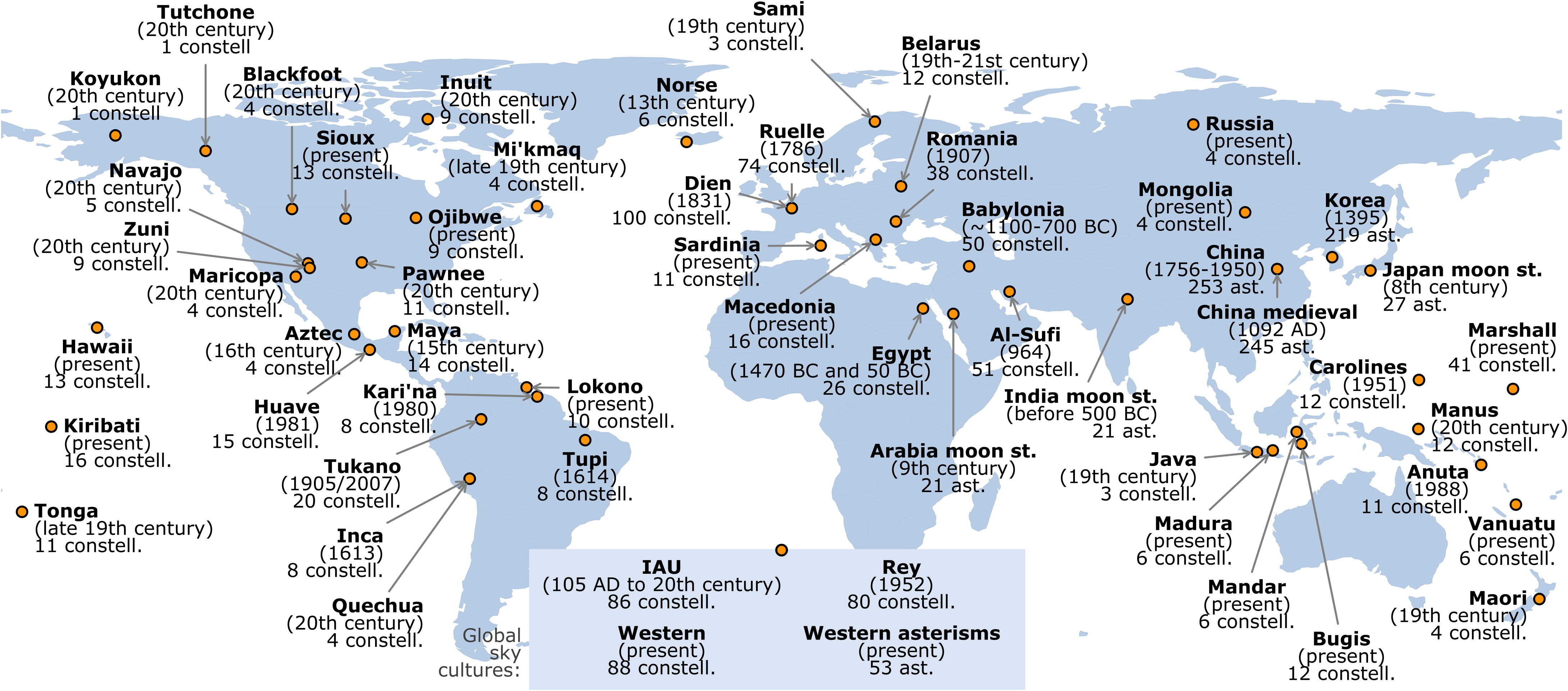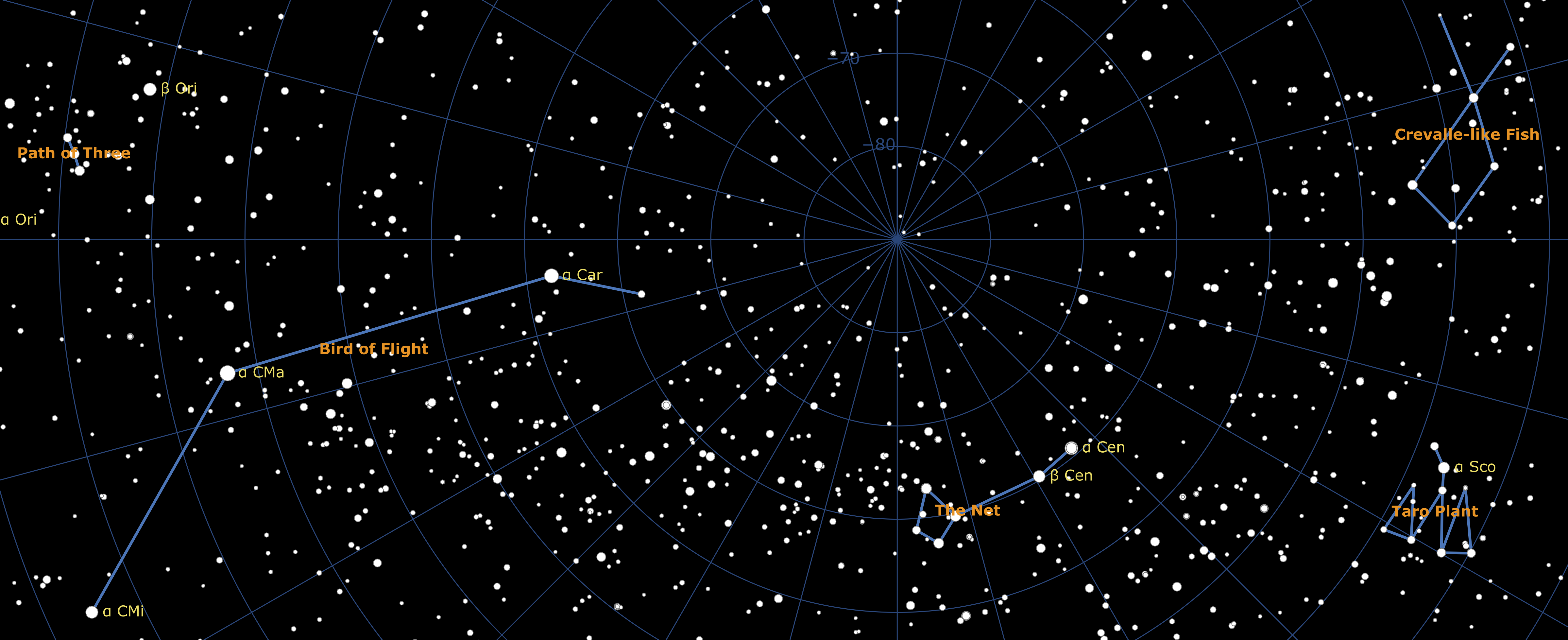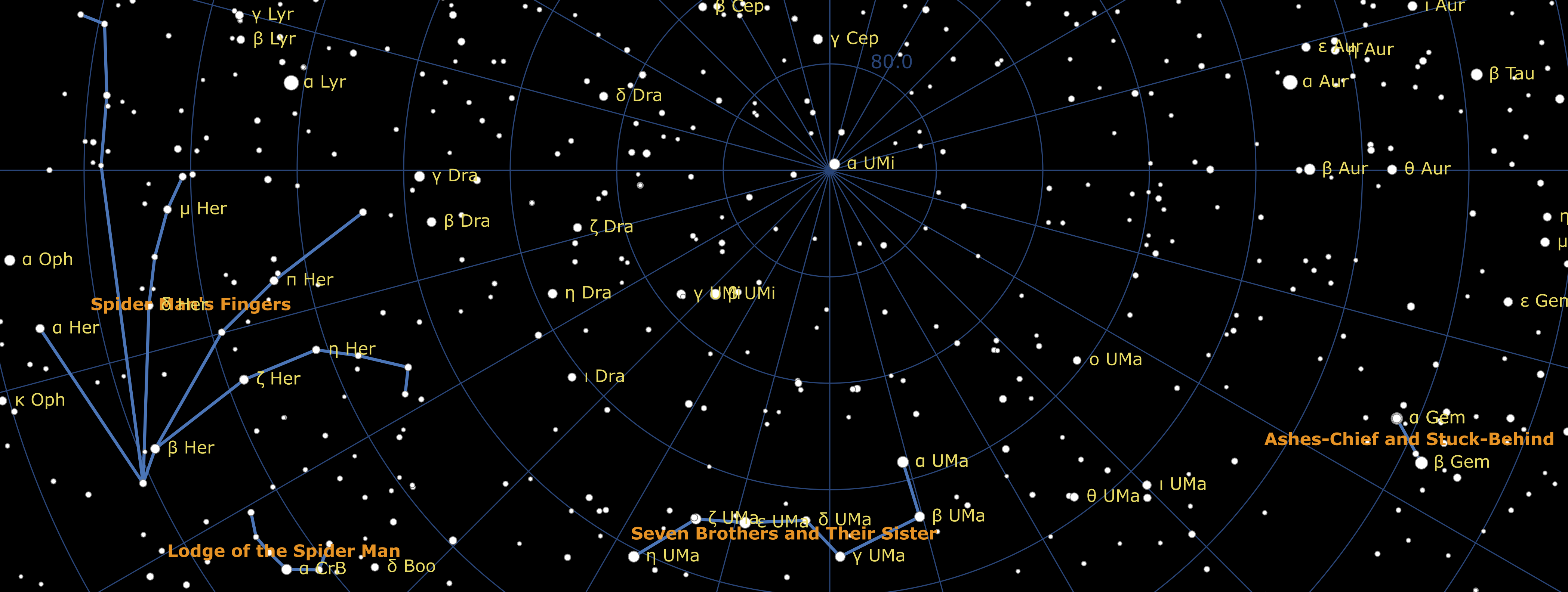Dear Wyatt from 11th grade,
Thank you for reaching out to ask questions. I enjoy answering them. Your questions were (I paraphrase) "How were constellations made? Why did people look at the stars and think they made different shapes that meant something?"
You may be surprised, but your second question (the Why?) is much easier to answer than the first. Even though most constellations were formed long ago and we cannot interview their creators any more, we often know for what purpose their culture (as a whole) developed astronomical traditions. Often, these traditions were genuinely useful in people's daily lives. Remembering constellations and their position in the sky at certain times of the night provided a compass for some people to find their way to a destination, or a clock for them to know the time at night, or pictures of their gods or mythological characters, or a way to illustrate the stories they told each other about the world and how it works.
This map of the world shows (with orange dots) the location of astronomical cultures which had documented constellations (or smaller figures called asterisms) that I know about. Most cultures are denoted by place or tribe names (such as the Marshall Islands in Micronesia, or the Ojibwe Native Americans). A few were the work of a single author (such as Alexandre Ruelle, an 18th-century French astronomer). All astronomical cultures (except those four written at the bottom) were only used in that part of the world. What can be seen is that some were oceanic cultures (on islands in the Pacific and Indonesia) and some were land-locked. Some were large, bureaucratic empires (such as China) and some were comparatively small tribes with a flat social organisation (such as most of the Native Americans). Some were literate (they wrote down their astronomical observations and drew their star charts), but most were not. This diversity in literacy, geography, and social organisation should make you guess that the answer to the Why? question is... very diverse. In each type of culture, the constellations were created for different purposes. I give you two examples below. 
Navigation. The oceanic cultures needed constellations to help their open-water navigation. On the small island of Anuta (in the Pacific, just South of the Equator), the main constellation is this big Bird of Flight (below on the left, in the Southern sky) which stretches about a quarter of the way across the sky. This was a sky marker with practical navigational utility. Now, why would the Anuta people see a bird in flight? Because they were thinking about navigation, and in their culture canoes are likened to birds! Also the voyagers themselves are metaphorically depicted as birds in the local songs. For these people, navigation is like flying. You also see in this piece of sky fish-related constellations (The Net to catch fish, and a Fish constellation), but also a Taro Plant which they eat. Other seafaring cultures have similar themes in the sky: we see constellations in the shape of boats, fish, nets, and birds. This way, the constellations were memorable, and they could be used at night instead of a compass. Note that where the Anuta people see a net, we see a cross, Crux. 
Administration. In South-East Asia (in China and around), the story is completely different. The Chinese emperors saw the sky as an extension of their empire on earth! Below is a part of the Northern Chinese sky, where you can see relatively small constellations named after humans (including military ranks), a yard for chariots, a stable for horses, a street, a boat, some buildings, some foodstuff, a well, and even some flags and a canopy for shade. If you looked at their sky as a whole, you would see that they essentially drew the imperial court, in great detail and without leaving any empty space. This is one way to see the sky: as a place that you can "colonise". You also see how many more stars the Chinese used than the Anuta people: that's because the Chinese built telescopes and thus could see and document also faint stars. 
Religion and myth. In most places around the world, people drew constellations as images for the gods in their religion, or characters in their myths. So, their sky was an open book, illustrating the stories they told each other. This is the case also for many (not all) of the constellations now standard in the Western world, which you can see at the International Astronomical Union. For example, the constellations of the "zodiac" (gods and their animals) already existed in Mesopotamia very long ago, and are of religious origin. The oldest are Taurus, Leo, Scorpius, Aquarius (dated 3000 BC, when they marked the cardinal points), then Gemini, Virgo, Sagittarius, Pisces, Capricornus (3rd or 2nd millennium BC). The Greeks adopted these constellations, then added their own mythological characters (and animals): Orion, Cepheus, Cassiopeia, Andromeda, Perseus, Pegasus, Canes Venatici, Delphinus, and others. It is also the case for many Native American cultures. For example, the Blackfoot (below) tell stories about siblings who escape to the sky when being chased by a bear, and this is their Seven Brothers and Their Sister constellation (the sister is the small star Alcor). On the left, the Spider Man's Fingers represents five fingers spinning a thread to let the legendary Feather Woman (native name: So-at-sa-ki) down from the sky (note that it is not certain that this constellation is exactly correct; unfortunately much of this knowledge was lost before it was documented). 
You see how many reasons and purposes people had to make constellations. This is the answer to the Why question.
Finally, we don't quite understand How exactly people chose particular stars and grouped them into constellations, such that their shapes perhaps recall a real object or person. Some scientists (including myself) are looking into this question now, trying to see to what extent these groups of stars and lines are perhaps "natural" to choose, due to the star pattern in the sky. Perhaps in a few more years we will know more.
Doina